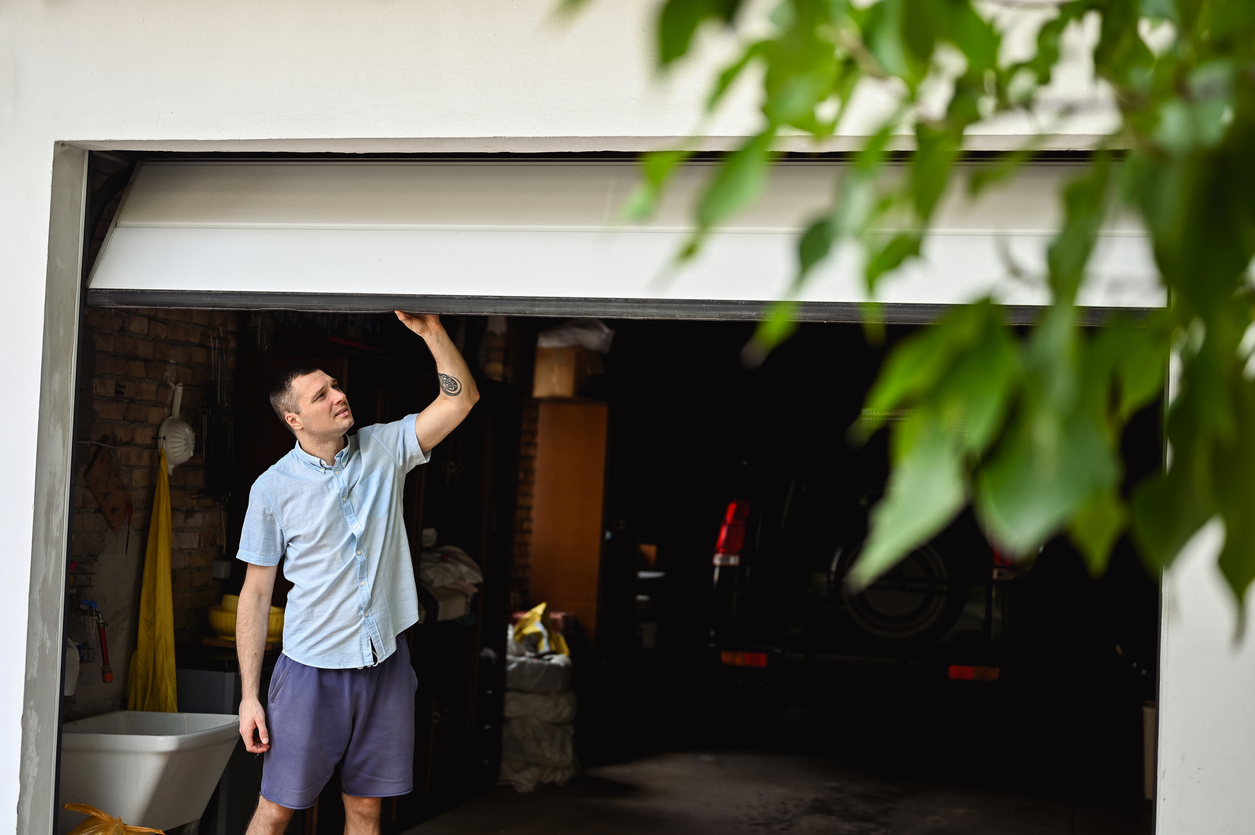We may earn revenue from the products available on this page and participate in affiliate programs. Learn More ›
In the early 1900s, attached garages started popping up and becoming more commonplace. And why wouldn’t they? This space keeps a family’s cars safe and sheltered, offers weather protection for home entry, comes with storage space, and more.
Today, it’s more apparent, however, that having an attached garage could significantly worsen a home’s indoor air quality by introducing harmful pollutants and toxins into the living space. Americans spend approximately 90 percent of their time indoors, and the concentrations of some of these pollutants can be two to five times higher than typical outdoor concentrations.
If you have an attached garage or use it as an extension of your living space, as a workshop, studio, or small business headquarters, keep reading to find out how it’s affecting your home air quality and if there’s anything you can do about it.
The family car produces carbon monoxide.

It’s no secret that running a car in the garage is dangerous. You may not be aware that even after you’ve turned off the engine, your vehicle continues to release benzene into the air. Benzene is a colorless chemical; its exposure has been linked to increased risk of leukemia and other blood disorders.
When the engine is on, vehicles produce carbon monoxide. This clear, odorless gas can be deadly when inhaled at high concentrations. Like other pollutants in the air, carbon monoxide can enter your home through the garage—which makes an excellent case for parking your car in the driveway instead.
If you park your car in your attached garage, leave the main garage door open a few minutes after pulling in and whenever warming up a car. Installing a carbon monoxide detector in your home can help alert you if your indoor levels become too high. Additionally, having an air purifier inside the garage can help remove contaminants before they can seep into your home.
VOCs from stored household products can build up.

Volatile organic compounds (VOCs) are emitted from many household products you wouldn’t think twice about using—from cleaning sprays to pool chemicals to paint thinners. Unfortunately, many people store products containing VOCs in the garage. Exposure to VOC vapors causes various health issues, including minor irritation, headaches, coordination issues, organ damage, and more.
Homes with attached garages can have up to 50 times more gas concentration than the outside air. Gas is another type of VOC. Take a look around your garage to find sources of gas vapors. You may come across jerry cans, gas-powered tools, a dirt bike, a power generator, and likely some other items too.
According to a study in the journal Indoor Air, indoor levels of benzene and other VOCs in homes with attached garages are higher than in homes without attached garages. Instead of storing these products in the garage where the VOCs can permeate your house, move them to a shed elsewhere on the property.
Using the garage as the main access point lets in poor air.

After parking their car, many homeowners enter their home through the attached garage. The constant use of this door is a convenient entry point for the home’s residents, but also for all the air pollutants in the attached garage, giving fumes an easy way to move from the garage to the living space.
This particular door also may not have the same building protocols as other exterior doors in your home regarding sealing or weatherstripping, making it all the more likely that fumes can get inside. No matter whether this is part of your area’s building code, ensure this door seals correctly.
Lack of garage ventilation makes matters worse.

It’s easy for air pollution to infiltrate your home through an attached garage. Ventilation is crucial to defend against poor indoor air quality caused by products inside the garage. Installing a garage ventilation system helps remove VOCs from the air, and leaving the garage door open occasionally to air out the garage can lower the amount of lingering air pollution, too. The study in Indoor Air verifies that ventilation helps reduce the concentration of air pollutants originating in the garage.
It’s not just residential garages you have to worry about, though. This issue also applies to office buildings and apartments. According to the U.S. Environmental Protection Agency, “Carbon monoxide and other components of automobile exhaust can be drawn from underground parking garages through stairwells and elevator shafts into office spaces.”
Synthetic building materials can off-gas.

Your home air quality may be affected by the construction of your garage. According to an EPA report, “indoor concentrations of some pollutants have increased in recent decades.” They attribute this to factors like energy-efficient building construction that lacks sufficient ventilation and reliance on synthetic building materials—just to name a few.
Building materials are also possible sources of contaminants, which can have chemical off-gassing or degradation that release pollutants into the air. If you are building or renovating an attached garage, learn about energy-efficient yet low-emitting materials from green building organizations such as the U.S. Green Building Council’s LEED program.
Use caution when choosing the garage as a hobby space.

The primary use for a garage is to house vehicles. However, many people are getting creative with this space, converting a garage into a rehearsal or paint studio, headquarters for a dot-com startup, gym, workshop, or something else.
By spending hobby time in the garage, you are exposing yourself to lingering air pollutants from what’s already in the space. Plus, some hobbies can introduce additional irritants into the air. These could be fumes from art products, adhesives, sawdust from woodworking, or metalworking dust.
If you use the garage as an extension of your living space, you can open the garage door to air out the garage, use a ventilation system, wear a mask, and clean up as you go to remove potentially damaging particles from the air.


